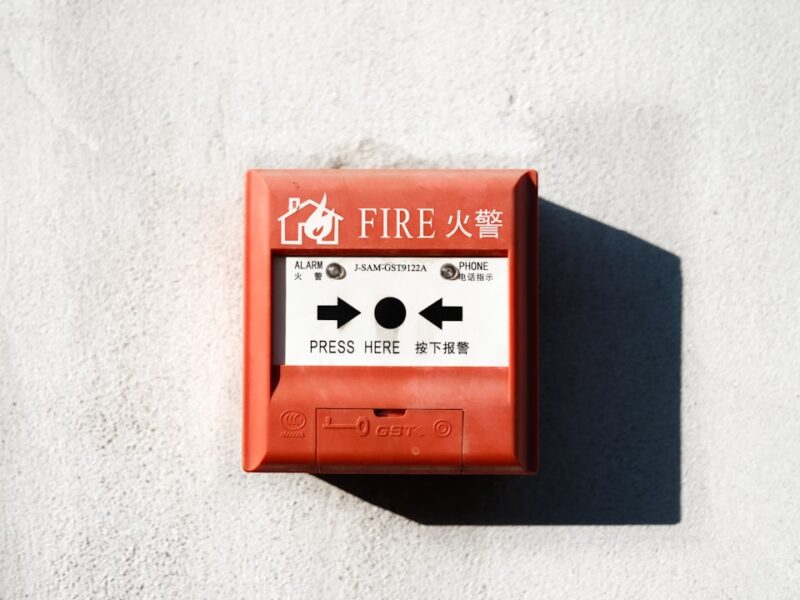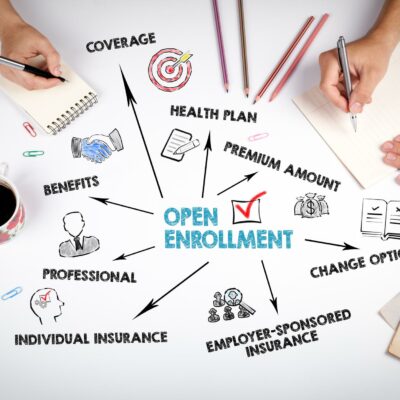Emergency loans are financial products designed to provide quick access to funds during unforeseen circumstances, such as medical emergencies, car repairs, or unexpected job loss. These loans are typically characterized by their expedited approval processes and minimal documentation requirements, allowing borrowers to receive funds swiftly when they need them most. Unlike traditional loans, which may take days or even weeks to process, emergency loans can often be approved within hours, making them a vital resource for individuals facing urgent financial needs.
The mechanics of emergency loans vary depending on the lender and the specific product. Generally, these loans can be secured or unsecured. Secured loans require collateral, such as a vehicle or property, which the lender can claim if the borrower defaults.
Unsecured loans, on the other hand, do not require collateral but may come with higher interest rates due to the increased risk for the lender. The loan amounts can range from a few hundred to several thousand dollars, and repayment terms can vary widely, often spanning from a few weeks to several months. Understanding these nuances is crucial for borrowers to make informed decisions about their financial options.
Key Takeaways
- Emergency loans are short-term loans designed to provide quick financial relief in times of unexpected expenses or emergencies.
- Eligibility criteria for emergency loans vary by lender, but generally require a steady income, good credit history, and the ability to repay the loan.
- To apply for an emergency loan, gather necessary documents, research lenders, compare terms and rates, and submit an application online or in person.
- Pros of emergency loans include quick access to funds, while cons include high interest rates and potential for debt cycle. Consider all factors before applying.
- Alternatives to emergency loans include borrowing from friends or family, using a credit card, seeking assistance from non-profit organizations, or exploring government assistance programs.
- When repaying an emergency loan, create a budget, prioritize payments, and consider additional income sources to manage finances responsibly.
- Common mistakes to avoid when seeking an emergency loan include borrowing more than needed, ignoring the fine print, and not considering long-term financial implications.
- Finding the right emergency loan provider involves comparing options, reading reviews, understanding terms and conditions, and making an informed decision based on individual needs and circumstances.
Eligibility Criteria for Emergency Loans: Who Can Apply and Qualify
Credit Score and Creditworthiness
It is essential for potential borrowers to check their credit reports and scores before applying, as this can influence their chances of approval. A good credit score can significantly improve the likelihood of securing an emergency loan.
Income Stability and Employment Status
Income stability is another critical criterion for qualifying for an emergency loan. Lenders want assurance that borrowers have a reliable source of income to meet their repayment obligations. This can include full-time employment, part-time work, or other forms of income such as pensions or government benefits. Additionally, some lenders may impose minimum income thresholds that applicants must meet to qualify.
Preparing Documentation and Improving Chances of Approval
It is also common for lenders to require proof of income through pay stubs or bank statements. Understanding these eligibility requirements can help applicants prepare their documentation and improve their chances of securing the necessary funds. By knowing what lenders look for, borrowers can increase their chances of getting approved for an emergency loan.
How to Apply for an Emergency Loan: Step-by-Step Guide

Applying for an emergency loan involves several straightforward steps that can help streamline the process and increase the likelihood of approval. The first step is to assess your financial needs and determine how much money you require. This involves evaluating your current financial situation, including any outstanding debts and monthly expenses.
Having a clear understanding of your needs will help you choose the right loan amount and avoid borrowing more than necessary. Once you have determined your financial needs, the next step is to research potential lenders. This includes comparing interest rates, fees, and repayment terms across various financial institutions, including banks, credit unions, and online lenders.
Many lenders offer pre-qualification processes that allow you to see potential loan offers without impacting your credit score. After selecting a lender that meets your criteria, you will need to complete an application form, which typically requires personal information such as your name, address, Social Security number, and employment details. Be prepared to provide documentation that verifies your income and identity.
After submitting your application, the lender will review your information and conduct a credit check. If approved, you will receive a loan offer detailing the terms and conditions of the loan. It is crucial to read this offer carefully before accepting it, as it will outline the interest rate, repayment schedule, and any associated fees.
Once you accept the offer, the lender will disburse the funds directly into your bank account, often within a short timeframe.
Pros and Cons of Emergency Loans: What to Consider Before Applying
| Pros | Cons |
|---|---|
| Provides quick access to funds | High interest rates |
| Can be used for unexpected expenses | May require a good credit score |
| No collateral required | Potential for debt cycle |
| Flexible repayment options | Origination fees |
Emergency loans come with distinct advantages that can be appealing in times of financial distress. One of the primary benefits is the speed at which funds are made available. In urgent situations where immediate cash is required—such as medical emergencies or urgent home repairs—having access to quick financing can alleviate stress and provide necessary relief.
Additionally, many emergency loans do not require extensive documentation or lengthy approval processes, making them accessible even for those with less-than-perfect credit histories. However, there are also significant drawbacks associated with emergency loans that potential borrowers should consider carefully. One of the most notable concerns is the high-interest rates that often accompany these loans.
Because they are designed for quick access to cash and may be offered to individuals with lower credit scores, lenders typically charge higher rates to mitigate their risk. This can lead to substantial repayment amounts over time if borrowers are not careful about managing their finances. Furthermore, some emergency loans may come with hidden fees or unfavorable terms that can exacerbate financial difficulties if not fully understood before borrowing.
Alternatives to Emergency Loans: Other Options for Quick Financial Relief
While emergency loans can provide immediate financial relief, they are not the only option available for individuals facing urgent monetary needs. One alternative is utilizing a personal line of credit, which allows borrowers to access funds as needed up to a predetermined limit. This flexibility can be beneficial for managing ongoing expenses without incurring high-interest charges on a lump-sum loan.
Personal lines of credit often have lower interest rates than emergency loans and can be a more cost-effective solution for those who qualify. Another option is seeking assistance from local charities or non-profit organizations that offer financial aid in times of crisis. Many communities have resources available for individuals facing hardships due to job loss or medical emergencies.
These organizations may provide grants or no-interest loans that do not require repayment under certain conditions. Additionally, negotiating payment plans with creditors or service providers can also be an effective way to manage immediate financial obligations without resorting to high-interest borrowing.
Tips for Repaying an Emergency Loan: Managing Your Finances Responsibly

Repaying an emergency loan requires careful planning and disciplined financial management to avoid falling into a cycle of debt. One effective strategy is to create a detailed budget that outlines all income sources and expenses. By tracking spending habits and identifying areas where costs can be reduced, borrowers can allocate more funds toward repaying their loans promptly.
Setting up automatic payments can also help ensure that payments are made on time, reducing the risk of late fees and negative impacts on credit scores. Additionally, it is advisable for borrowers to prioritize their debts based on interest rates and repayment terms. If possible, focus on paying off high-interest loans first while making minimum payments on lower-interest debts.
This approach can save money in interest payments over time and help borrowers regain control of their financial situation more quickly. Furthermore, maintaining open communication with lenders about any potential difficulties in making payments can lead to more flexible arrangements or temporary relief options.
Common Mistakes to Avoid When Seeking an Emergency Loan
When seeking an emergency loan, there are several common pitfalls that borrowers should be aware of to avoid exacerbating their financial situations. One significant mistake is failing to read the fine print of loan agreements thoroughly. Many borrowers overlook important details regarding interest rates, fees, and repayment terms that can significantly impact the overall cost of borrowing.
Understanding these terms is crucial for making informed decisions about whether a particular loan is suitable for one’s financial circumstances. Another frequent error is applying for multiple loans simultaneously in hopes of securing better terms or faster approval. This practice can lead to multiple hard inquiries on one’s credit report, potentially lowering credit scores and making it more challenging to obtain favorable financing in the future.
Instead of applying for numerous loans at once, it is wiser to conduct thorough research on potential lenders and select one that aligns with your needs before submitting an application.
Finding the Right Emergency Loan Provider: Comparing Options and Making an Informed Decision
Choosing the right emergency loan provider is essential for ensuring a positive borrowing experience and minimizing financial strain in the long run. Start by researching various lenders and comparing their offerings based on interest rates, fees, repayment terms, and customer reviews. Online platforms that aggregate loan options can be particularly helpful in providing side-by-side comparisons of different lenders’ products.
Additionally, consider reaching out to local banks or credit unions that may offer competitive rates or personalized service compared to larger online lenders. Building a relationship with a local institution can also provide additional benefits in terms of future borrowing needs or financial advice. Ultimately, taking the time to evaluate different options carefully will empower borrowers to make informed decisions that align with their financial goals while ensuring they receive the best possible terms for their emergency loan needs.
FAQs
What is an emergency loan for $20,000?
An emergency loan for $20,000 is a type of loan that is designed to provide financial assistance in times of urgent need. It is typically used to cover unexpected expenses such as medical bills, car repairs, or home repairs.
How can I qualify for an emergency loan for $20,000?
Qualification requirements for an emergency loan for $20,000 vary depending on the lender. Generally, lenders will consider factors such as credit score, income, employment history, and debt-to-income ratio when determining eligibility for the loan.
What are the typical interest rates for an emergency loan for $20,000?
Interest rates for an emergency loan for $20,000 can vary depending on the lender, the borrower’s creditworthiness, and the loan term. Generally, interest rates for personal loans range from 6% to 36%.
What are the repayment terms for an emergency loan for $20,000?
Repayment terms for an emergency loan for $20,000 can vary depending on the lender. Typically, repayment terms range from 12 to 60 months. Borrowers may have the option to choose a repayment term that best fits their financial situation.
What are the potential consequences of defaulting on an emergency loan for $20,000?
Defaulting on an emergency loan for $20,000 can have serious consequences, including damage to the borrower’s credit score, collection efforts by the lender, and potential legal action. It is important for borrowers to communicate with their lender if they are experiencing difficulty making payments.











Comments